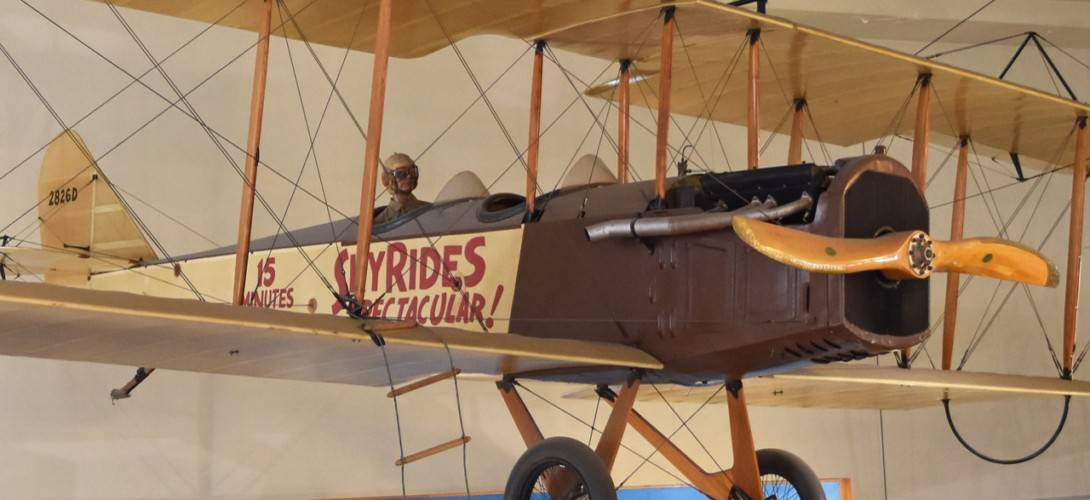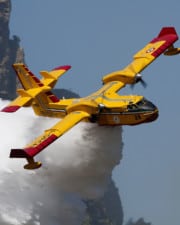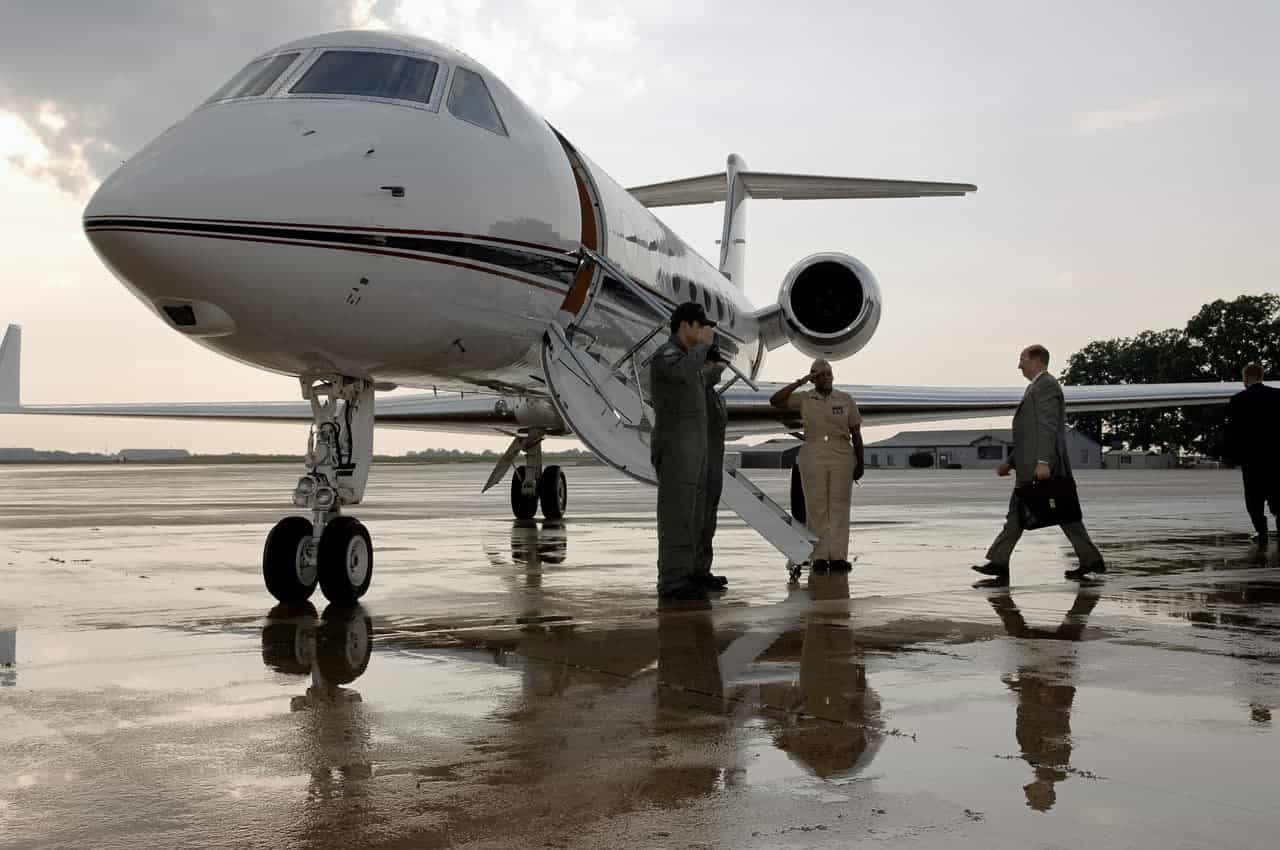Barnstorming refers to an aerial display or exhibition performed by pilots flying small aircraft, typically biplanes. These exhibitions typically involved pilots performing stunts, such as wing walking, and giving airplane rides to public members for a fee to attract attention, leading to “stunt flying.”
The word “barnstorming” comes from the phrase “to fly a barnstorm.” This was a common occurrence during the early years of aviation when pilots would fly their aircraft low over fields or farmlands and drop items like leaflets or candy. The pilots often performed stunts.
Barnstorming became popular following World War I, as many military pilots were looking for work and ways to make money. The activity saw a resurgence in popularity during the 1960s and 1970s due to the increased popularity of recreational aviation.
Today, barnstorming is still performed at airshows and other public events. However, it is not as common as it once was due to the increased regulation on the aviation industry.
While barnstorming may be a thing of the past, it still holds a place in aviation history. If you are pondering what barnstorming is, and what happened that led to its demise, this article will give you a brief history of barnstorming and its impact on the aviation industry.
What Are Barnstormers?
Barnstormers were pilots who traveled around the country, giving airplane rides and performing stunts. They were often ex-military pilots who had difficulty finding work after the war.

The first barnstormers were ex-military pilots looking for a way to make a living in the United States after World War I. They would buy used aircraft and fly them around the country, performing tricks and stunts to make money.
They would fly their aircraft into small towns and offer free rides. They would also perform stunts to entertain the crowds. Some famous barnstormers included Amelia Earhart, Charles Lindbergh, and Wiley Post.
Where Did Barnstorming Originate?
The origins of barnstorming can be traced back to the Wright brothers, who gave public demonstrations of their flying machine in the United States and Europe. They charged people to take rides in their aircraft and even performed stunts to show off the capabilities of their inventions.
As aviation developed in the early 20th century, barnstorming became more popular. Pilots would travel around the country, giving public demonstrations and selling rides. It was a way for them to make a living and show off their skills.
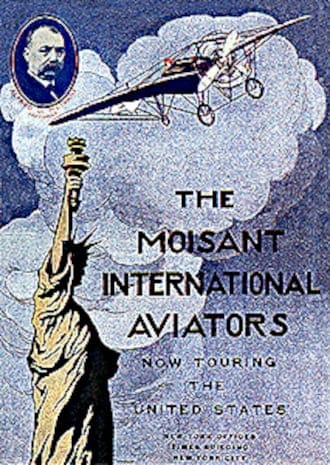
During World War I, many pilots returned home with skills that they had acquired during the war. They used these skills to perform stunts and give public demonstrations.
After the war, the popularity of barnstorming continued to grow. It peaked in the 1920s, often referred to as the “Golden Age of Aviation.” This was when many people were fascinated by aviation and wanted to see what these new machines could do.
What Kicked Off The Barnstorming Era?
It all started in the early 1920s when some daring young men decided to take their show on the road – or rather, to the skies. They were known as barnstormers and thrilled audiences across the country with their death-defying aerial feats.

At a time when most people had never even seen an airplane up close, let alone flown in one, the barnstormers were like rock stars.
They were daring and adventurous and helped to popularize aviation. The barnstormers were a group of pilots who traveled around the country, performing aerial stunts and giving people their first taste of flight.
They got their name from the fact that they would often land in farmers’ fields or on the roofs of barns.
The Most Famous Barnstormers
Though the vast majority of barnstormers were only known in their local regions, a few were able to gain national attention and be immortalized in the history books about this era of aviation history. Some of the most famous barnstormers in history were:
1. Wiley Post
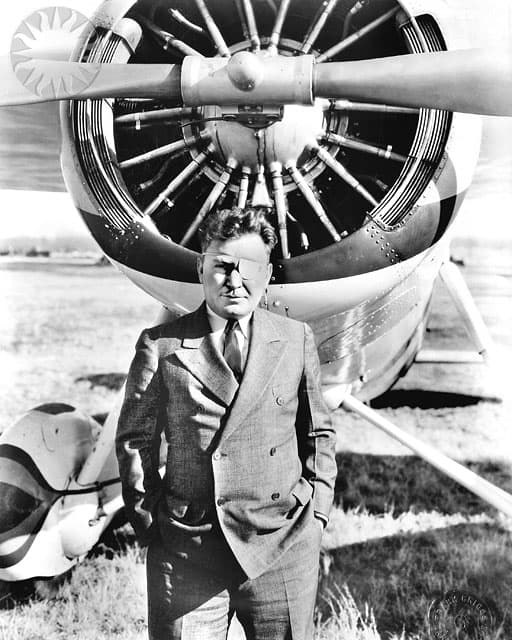
Wiley Post was the first person to circumnavigate the globe by air, setting a then-world record of 8 days and 15 hours and 51 minutes in July 1931.
After setting this record, Wiley Post went one further: circumnavigating the globe solo. In July 1933, Wiley Post took off from an airfield in Brooklyn, New York and returned 7 days, 18 hours and 49 minutes later; beating his previous record.
Wiley Post was popular because he did death-defying feats that made people’s jaws drop. He once even flew under Brooklyn Bridge!
2. Bessie Coleman
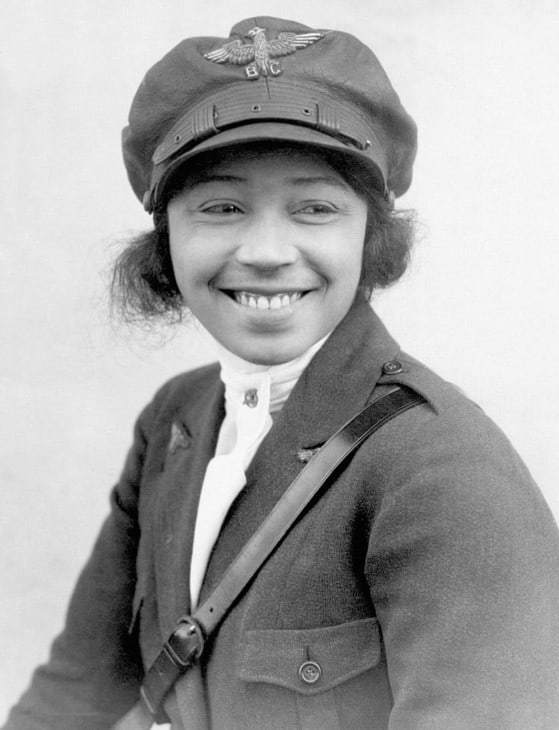
Bessie Coleman was an African American aviator who was the first woman of African-American and Native American heritage to earn a pilot’s license.
Despite flying during an era when Jim Crow laws were in full effect, Bessie Coleman let her flying skills speak for themselves, proving to many that both women and minorities could be just as skilled pilots as their white, male counterparts were.
3. Amelia Earhart

Amelia Earhart was an American aviator who was the first woman to fly solo across the Atlantic Ocean.
Amelia Earhart was popular because she was an excellent pilot and a strong advocate for women’s rights. She inspired other women to pursue their dreams, even in adversity, not just in aviation but in all walks of life.
She has since been immortalized not just for her aviation feats but also for her famous disappearance, which remains unsolved.
4. Charles Lindbergh

Charles Lindbergh was an American aviator who was the first person to fly solo nonstop across the Atlantic Ocean, flying between New York and Paris on May 20-21 1927 in his custom-built “Spirit of St. Louis” aircraft.
Though later mired in controversy for his support of Adolf Hitler, Lindbergh was popular in the 1920’s and 1930’s because he was an excellent pilot with a strong sense of adventure. He inspired other people to pursue their dreams, even if they seemed impossible.
5. Eddie Rickenbacker
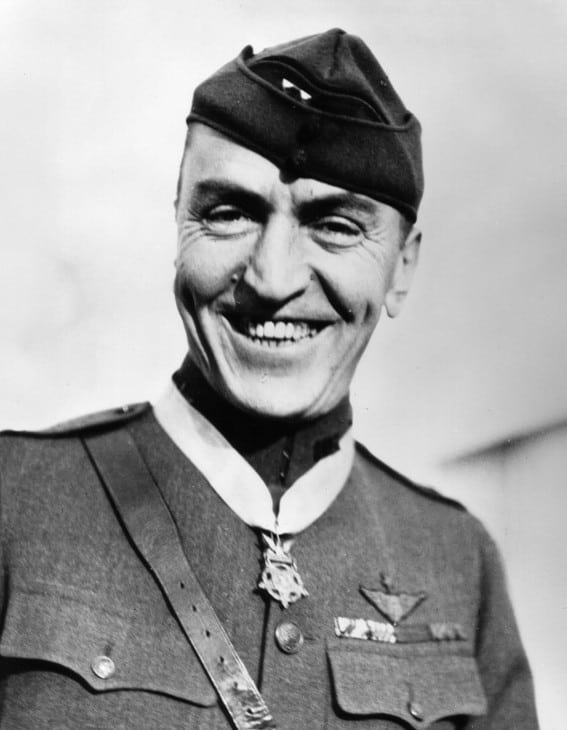
Eddie Rickenbacker was an American aviator and World War I ace who was the most successful fighter pilot in American history with 26 confirmed aerial victories.
Rickenbacker was popular not only because he was an excellent pilot who could effortlessly perform stunts others failed at, but because he was a war hero too.
He inspired other people to pursue their dreams, even in danger. After the end of the barnstorming era, he acquired what later went on to become Eastern Airlines, and served as its chairman until December 31 1963.
Did Barnstormers Perform Their Stunts Alone or in Teams?
In the early days of aviation, barnstormers were trailblazers who helped to popularize flight. These brave pilots toured the country, performing daredevil stunts and offering rides to anyone brave enough to take to the skies.
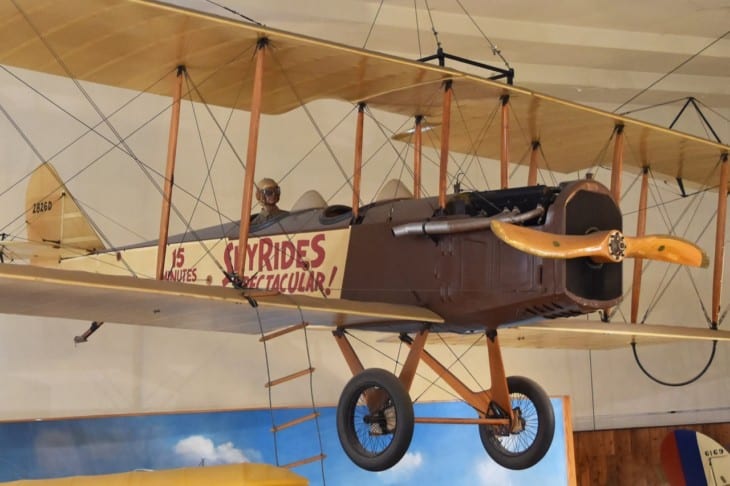
Barnstormers sometimes flew alone or in small teams, but some even organized enormous “flying circuses” with several aircraft and stunt performers. These acts engaged promoters to schedule gigs in places in advance.
Of all the barnstorming acts, they were the biggest and best coordinated. The Flying Aces Air Circus, “The 13 Black Cats,” “Mabel Cody’s Flying Circus,” “Inman Brothers Flying Circus,” and the “Gates Flying Circus,” to which Clyde Pangborn belonged until 1928, were a few of the most well-known.
Related:
– Blue Angels
– Thunderbirds
The Most Dangerous Stunts Performed by Barnstormers
In the early days of aviation, there were no commercial airlines or airports. Air travel was a novel concept, and pilots were often viewed as daring daredevils.
To earn a living, these early aviators toured the country, performing stunts and giving rides to anyone brave enough to climb aboard their small, unprepossessing aircraft. Over time, these barnstormers began to push the limits of what was possible, performing increasingly dangerous feats to wow their audiences.
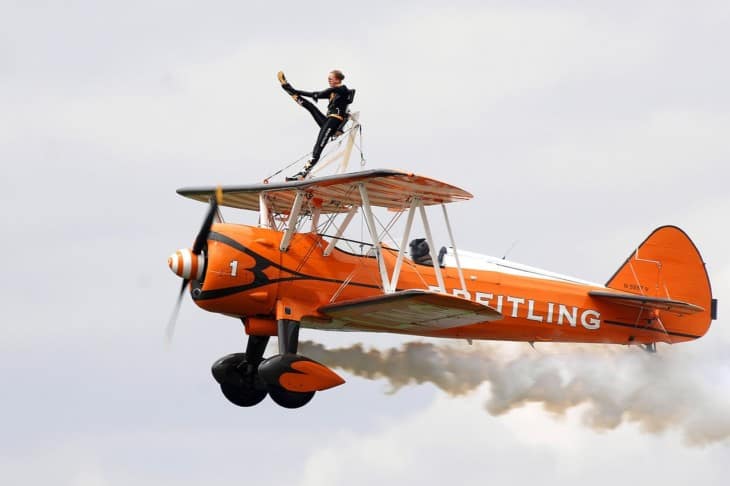
One of the most popular stunts was known as the death dive. Pilots would fly their aircraft to a high altitude before diving straight toward the ground. They would pull up at the last possible moment, narrowly avoiding disaster.
Other favorites included flying through hoops of fire and wing walking—a highly dangerous stunt in which a barnstormer would stand on the wings of an airplane while it was in flight.
Given the primitive state of early aviation, it’s not surprising that many barnstormers met premature ends. Nevertheless, their daredevil antics helped to capture the public imagination and laid the foundation for the field of aviation as we know it today.
Was Barnstorming Only Performed by Men?
Barnstorming was a popular form of entertainment in the early 20th century, and it was performed not only by former military men but also by women, minorities, and women minorities.

For example, on July 18, 1915, Katherine Stinson was the first woman in history to complete a loop. Bessie Coleman, an African-American aviator, “became a role model for women and African Americans in addition to thrilling audiences with her abilities as a barnstormer.”
Her sheer presence in the room posed a threat to prevalent modern preconceptions. Additionally, she battled discrimination where she could by using her famous status. Barnstorming allowed these groups of people to showcase their talents and skills to the world, and in doing so, they challenged societal norms and expectations.
Barnstorming Helped Shape Aviation History in America And Beyond
Barnstorming played a significant role in shaping the course of aviation history in America and beyond.
Barnstorming was a form of entertainment in which pilots would fly their aircraft into small towns and villages and perform aerial tricks for the locals. This was often the only exposure many people had to aviation, and it helped increase the popularity of flying.

Barnstorming also helped to improve piloting skills as pilots had to be able to fly their aircraft in a variety of conditions and terrain.
In addition, barnstorming helped to raise awareness of the potential of aviation and spurred the development of new aircraft and technologies. It showed the world what aircraft were capable of and inspired people to build better and more powerful machines.
Barnstorming showed the government that aircraft could be regulated and that they needed to be regulated for safety.
Why Did Barnstorming Stop?
Barnstorming declined in the 1930s as the Great Depression made it difficult for people to afford plane rides and public demonstrations. It also became more regulated as the government began to focus on safety systems.
Despite its decline, barnstorming continued into the 1940s and 1950s. It even experienced a resurgence in the 1960s and 1970s as the popularity of aviation increased.
Today, barnstorming is not as common as it once was, but there are still pilots who perform stunts and give public demonstrations. They keep the spirit of early aviation alive and remind us of the fascinating history of barnstorming.
Barnstorming stopped because it was becoming too dangerous. There were too many accidents, and too many people were getting hurt.

Another reason barnstorming stopped is that it was becoming too expensive to be commercially viable for most barnstormers. The aircraft were getting more complex, which required more specialist knowledge to properly maintain and thus cost more.
As a result, barnstormers were forced to raise their prices to make a profit, and landowners responded in kind, further pushing up barnstormers’ prices to a level that most were unwilling to pay.
The last reason barnstorming stopped is that the government began to regulate it. They did this to ensure that barnstorming was safe and that people were not being ripped off, but this too added to barnstormers’ costs and slowly put them out of business.
What Did a Barnstorming Show Look Like?
The “barnstorming season” lasted from early spring until after harvest and county fairs in the fall. Most barnstorming shows began with a pilot or team of pilots flying over a small rural town to attract local attention.
After landing at a nearby farm (thus the name “barnstorming”), they fought for the right to use an area as a temporary runway from which an air show could be staged, and a ride on the plane could have been offered.

In some places, there was a city-wide shutdown when a barnstormer or aerial group arrived, as people gathered to watch the performance, often taking time off work to do this or because they physically couldn’t get there due to the sheer number of people.
The Difference Between Barnstorming and Airshows
An airshow is a public event where people can watch aircraft fly and sometimes take rides. Barnstorming was similar, but it was more like a traveling road show. The pilots would go from town to town, offering airplane rides and performing stunts.
Airshows are more regulated than barnstorming was. They are also more organized and have more safety precautions. Barnstorming was more spontaneous and often more dangerous. Pilots would sometimes fly without proper licenses or insurance.
Today, there are still barnstorming pilots who travel around the country offering airplane rides and performing stunts. However, they are required to follow the same safety rules and regulations as any other pilot.

Well known teams performing air shows these days are the Blue Angels and Thunderbirds in the USA, the RCAF Snowbirds in Canada, and the RAF Red Arrows in the UK.
Today’s Fascination with Barnstorming
People today find barnstorming fascinating because it was a time when anything seemed possible. Aviation was new and exciting, and the pilots were true pioneers. They were pushing the limits of what was possible and redefining what it meant to fly.
Barnstorming also represents a time when things were simpler, and life moved at a slower pace. It is a reminder of a time when people were more connected to the natural world and each other.
Barnstorming is also a reminder of the important role that aviation has played in our history. It was a time when aviation was truly transformational, and it changed the world forever.

The Legacy of Barnstorming
Barnstorming introduced many people to aviation and inspired a love of flying. It also showed people that aircraft could be used for more than just transportation. They could be used for entertainment and sport as well.
There are a few ways in which barnstorming has left its legacy.
Airshows
Many modern airshows have their roots in barnstorming. The first official airshow was held in Reims, France, in 1909, and it included several barnstorming-style stunts and exhibitions.
Since then, airshows have become a popular form of entertainment worldwide. They often feature jaw-dropping aerial displays, pyrotechnics, music, and other forms of entertainment.
Every year, millions of people flock to airshows to see the latest tricks and marvel at the skilled pilots who perform them. In this way, the legacy of barnstorming lives on in the modern world.
Aircraft Testing
The legacy of barnstorming can also be seen in how aircraft are tested and regulated. Before an aircraft can be approved for use, it must undergo rigorous testing and certification. This process is designed to ensure that the aircraft is safe and meets all necessary safety standards.
This process was put in place after several accidents and incidents involving barnstorming pilots. As such, it can be seen as a direct result of the barnstorming era.
Pilot Regulations
In the early days of barnstorming, there were no rules or regulations governing how pilots could operate their aircraft. This led to several accidents and incidents, which resulted in calls for more regulation.
Today, all pilots must have a valid license and insurance before they can fly. Barnstorming was a time when aviation was new and exciting. It changed the world forever and left a lasting legacy that can still be seen today.
Commercial Aviation
But perhaps the most important legacy of the barnstorming era is that it almost single handedly created the modern commercial aviation industry that we all know and love today.
Whilst commercial barnstorming was in full swing in other parts of the country, in Washington, Congress was passing the Air Mail Act of 1925.
Effectively freeing the delivery of airmail from the near-total control of the Post Office Department by allowing private individuals to apply for permission to fly specific routes delivering air mail, most barnstormers took little notice of the Air Mail Act when it first passed.
After all, why would they give up a lucrative barnstorming career to earn less money as a glorified delivery driver (or should I say, flier!)?
But as more and more barnstormers began to be forced out of work thanks to the demise of barnstorming, many began to revisit this legislation.
Still the proud owners of their old aircraft, many former barnstormers modified their aircraft for cargo operations and founded their own air mail companies, which later became modern airlines after later branching into passenger flights.
Related Posts
